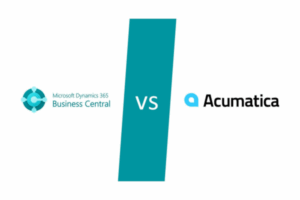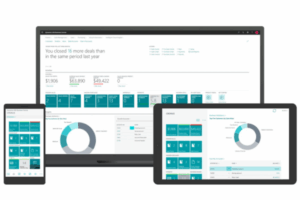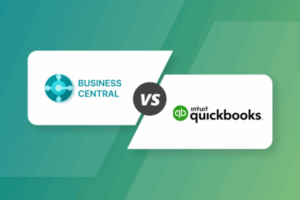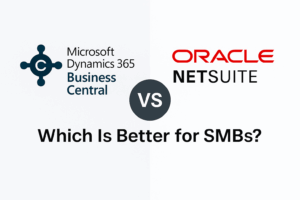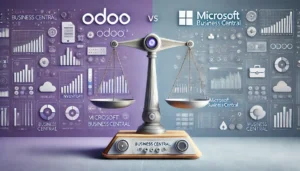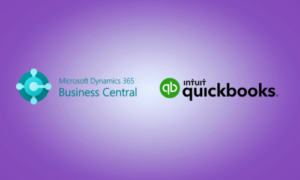How to Measure ROI for Cloud ERP
When it comes to Cloud ERP, ROI can be tricky to measure because it’s about more than just dollars. There are real, tangible savings (Hard ROI), but there are also other benefits like improved efficiency and better decision-making (Soft ROI). Let’s start by looking at the key factors that drive ROI.
1. Cost Savings
One of the biggest reasons companies switch to Cloud ERP is cost savings. When you move from an on-premise system to the cloud, you eliminate the need for big upfront hardware investments. You also avoid ongoing costs for server maintenance and software upgrades.
But it’s not just about cutting IT costs. Cloud ERP also helps you automate processes, which can save time and reduce errors. And when you eliminate those manual tasks, your team can focus on higher-value work that drives revenue.
2. Improved Efficiency
Cloud ERP systems streamline workflows across your business. Think about order processing, inventory management, or financial reporting—if you’re relying on manual processes or disconnected systems, it’s time-consuming and prone to mistakes. With Cloud ERP, everything is integrated, meaning your team has the information they need at their fingertips, and tasks that used to take hours can be done in minutes.
This efficiency boost can translate into major time savings, which is another key driver of ROI. Less time spent on admin work means more time spent growing the business.
3. Scalability and Flexibility
As your business grows, your Cloud ERP can grow with you. This scalability is a big advantage over traditional ERP systems, where expanding would mean costly upgrades or infrastructure changes. With Cloud ERP, you can add users, functionality, or even entire business units without worrying about IT headaches. This kind of flexibility makes sure you’re always getting the most out of your investment, no matter how your business evolves.
4. Data-Driven Insights
Having real-time data at your fingertips is one of the most underrated benefits of Cloud ERP. When your data is centralized and easy to access, you can make informed decisions that drive growth. For example, you can spot trends in sales, optimize inventory, or track customer behavior—all in real-time. These insights can help you make smarter business decisions, improve forecasting, and ultimately, boost your bottom line.
How to Calculate the ROI of an ERP System
ERP systems bring a lot of value to businesses, but calculating the return on investment (ROI) can be a bit tricky. While it’s easy to see the benefits, measuring them in dollar terms isn’t always straightforward. But don’t worry, we’ll walk you through how to calculate ERP ROI in a way that makes sense for your business.
One thing to keep in mind is the difference between “hard” ROI and “soft” ROI. Hard ROI refers to the measurable financial returns, like increased revenue or cost savings. For example, customers using Microsoft Dynamics 365 Business Central saw a 40% increase in revenue, and even though the company experienced 40% year-over-year growth, they only had to hire 20% more accounting and operations staff to manage the new business. Both stats are easy to quantify in dollars, which makes them examples of hard ROI.
On the flip side, soft ROI refers to benefits that are harder to put a number on, like improved employee morale or better brand reputation. These things can still have a significant impact on your bottom line, but you can’t always assign a specific dollar value to them.
Phases of ERP Implementation
When it comes to implementing an ERP system, there are typically two main phases: getting the system up and running, and then ongoing use by employees. The first phase often involves migrating data from your old system and leaning on your ERP vendor for support. The second phase is all about ensuring employees know how to make the most of the system. Training is critical here—if your team knows how to use the new ERP system effectively, you’ll see much better returns.
The ERP ROI Formula
Now, let’s dive into the formula you’ll use to calculate ERP ROI:
ROI = (total value of investment – total cost of investment) / total cost of investment x 100%
In simple terms, ERP ROI is the ratio of the gains from your ERP investment (expressed as a dollar value) compared to the total cost of ownership (TCO). This ratio is expressed as a percentage, and the higher it is, the better your return.
TCO includes the upfront cost of your ERP solution plus any ongoing costs, like subscription fees if you’re using a cloud-based system. In the case of a cloud ERP, TCO might include monthly or annual licensing fees, which are equivalent to the capital expenses in an on-premise system.
Example: Calculating ERP ROI
Let’s say a consumer goods company implemented a cloud ERP system and pays for it via an annual subscription. They want to calculate the ROI three years after implementation. Here’s how the costs break down:
- Upfront implementation cost: $50,000
- Yearly subscription fees: $100,000
- Three-year total cost (TCO): $350,000
Now, the company looks at the benefits it’s gained from the ERP system over those three years, focusing on hard ROI, like increased sales and cost savings. Here’s what they’ve calculated:
| Benefit | Year 0 | Year 1 | Year 2 | Year 3 | Total |
| Sales growth | $0 | $50,000 | $80,000 | $100,000 | $230,000 |
| Productivity gains | $0 | $30,000 | $40,000 | $90,000 | $160,000 |
| Cost savings | $0 | $60,000 | $100,000 | $115,000 | $275,000 |
| Total | $0 | $140,000 | $220,000 | $305,000 | $665,000 |
The total value provided by the ERP system over three years is $665,000. Using the ROI formula, we get:
($665,000 – $350,000) / $350,000 x 100% = 90% ROI
This means the company saw a 90% return on its ERP investment over the three-year period. While that might seem like a big number, a Forrester study found that organizations typically experience a 162% return on investment (ROI) over three years with Microsoft Dynamics 365 Business Central.
Beyond the Numbers: Intangible Gains
While this example focuses on hard costs, it’s important to remember the soft benefits that can come from an ERP system. Things like better employee satisfaction, improved collaboration, and even enhanced brand reputation can all contribute to your ROI, even if they’re harder to quantify.
Should You Measure ERP ROI Year-Over-Year?
Some companies prefer to calculate their ERP ROI year-over-year rather than over the entire life span of the system. To do this, you’d use the same formula but only apply the revenue or cost savings for that specific year. However, this can be tricky because many upfront costs, like employee training, are only incurred in the first year, and you won’t have to repeat them every year. Plus, ERP returns tend to increase in the first few years as you unlock new efficiencies, then level off into a steady state.
Calculating the ROI of an ERP system might seem complicated, but breaking it down into hard and soft returns can make it easier. The key is to look at both the financial gains and the intangible benefits, and to continuously optimize how you’re using your ERP to ensure you’re getting the best possible return over time.
One final nuance to note is that some organizations prefer to measure the ROI of their ERP year over year rather than over the system’s life span. One approach for doing so is to use the formula outlined above and apply only the revenue and/or savings for that year. But this is not always ideal, as much of the upfront costs will not be repeated in subsequent years. For instance, employee training is most intensive in the first few months after installation and less so in subsequent years. Similarly, ERP returns tend to increase in the first couple of years after implementation, as new efficiencies and opportunities are unlocked, driving better returns, before flattening out into a steady state.
How to Maximize the ROI of Cloud ERP
Getting the most out of your Cloud ERP investment isn’t just about choosing the right system—it’s about continuously optimizing it to fit your business. Here’s how you can maximize your ROI.
1. Set Clear Goals Before You Start
Before implementing a Cloud ERP system, it’s essential to know what you want to achieve. Is your goal to reduce operational costs? Improve order processing times? Streamline financial reporting? Having clear objectives will help you measure success and make sure your system is aligned with your business goals from day one.
2. Invest in Training
Cloud ERP is powerful, but only if your team knows how to use it. Make sure you invest in thorough training for your employees so they can take full advantage of the system’s capabilities. A well-trained team can help you get the most out of your ERP, leading to better efficiency and faster adoption.
3. Optimize Your Workflows
Once your Cloud ERP is up and running, it’s not time to set it and forget it. Continuously look for ways to optimize your processes and take advantage of new features as they become available. For example, are there tasks that could be automated but aren’t yet? Are there insights from your data that you haven’t fully tapped into? By regularly reviewing and fine-tuning your system, you can ensure it’s always delivering value.
4. Leverage Analytics
Cloud ERP systems come with powerful analytics tools, but you need to use them! Regularly review your business metrics and look for areas where you can improve. Whether it’s reducing lead times, optimizing inventory, or improving cash flow, the data is there to help you make smarter decisions and improve performance across the board.
5. Monitor and Adjust
Business needs change, and your Cloud ERP should be able to keep up. Regularly monitor the system’s performance against your goals and make adjustments as necessary. If your company expands into new markets, adds new products, or shifts focus, make sure your ERP is set up to support those changes.
In conclusion, the ROI of Cloud ERP goes beyond mere cost savings—it’s about driving efficiency, scalability, and data-driven growth that can elevate your business operations. By taking the time to measure both the hard and soft ROI, you can ensure you’re getting the most value out of your investment. Remember, maximizing ROI isn’t a one-time task. It requires continuous optimization, ongoing training, and leveraging the power of real-time data to stay agile and competitive. The right Cloud ERP system will not only meet your current needs but also grow with your business, ensuring a sustainable return on investment for years to come.




